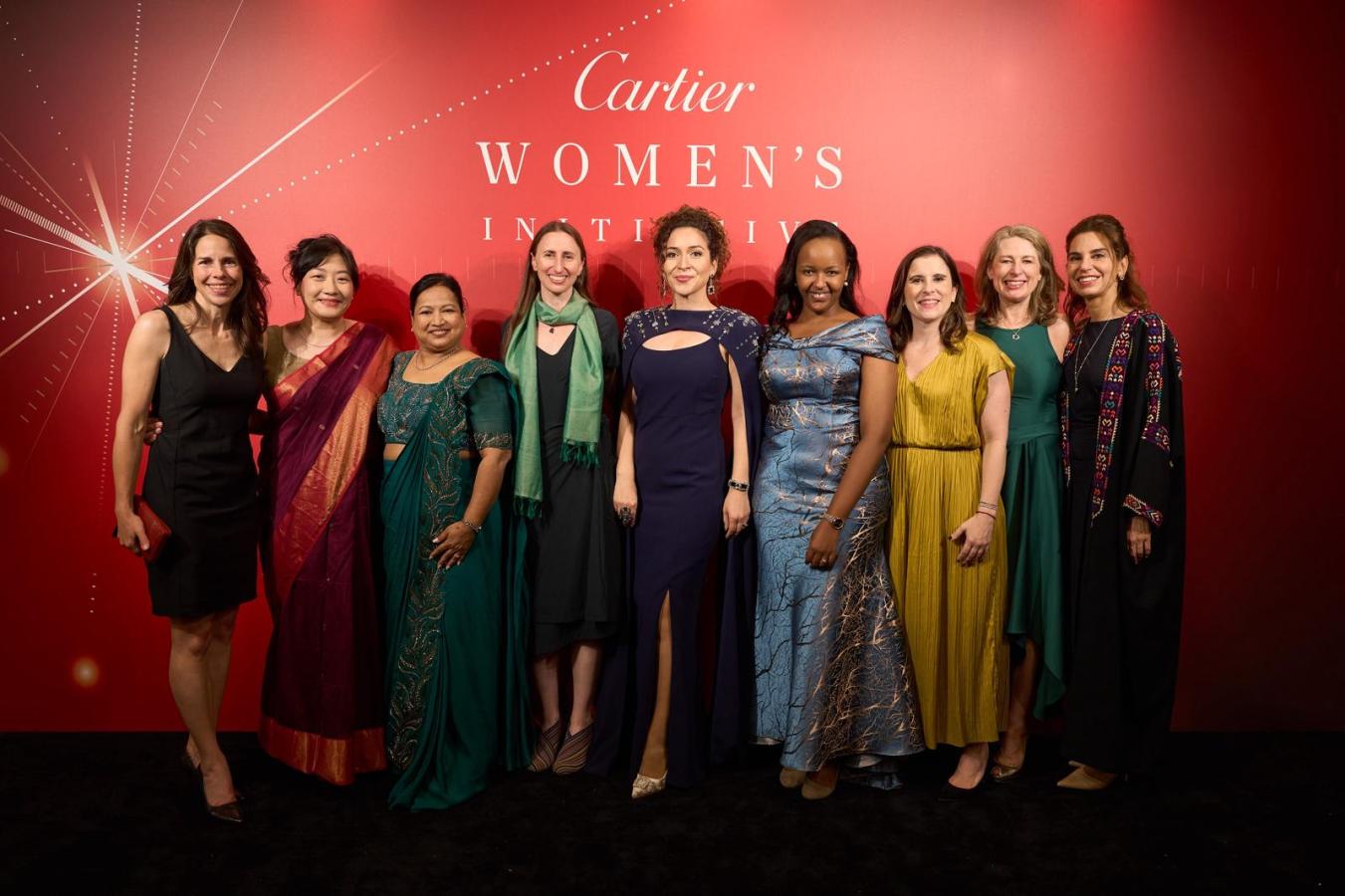Approaching its final month at Osaka Expo 2025, the Women’s Pavilion, in collaboration with Cartier, has become a platform for leaders, artists and activists to confront barriers and share solutions. Forbes Australia’s Shivaune Field unpacks everything you need to know.
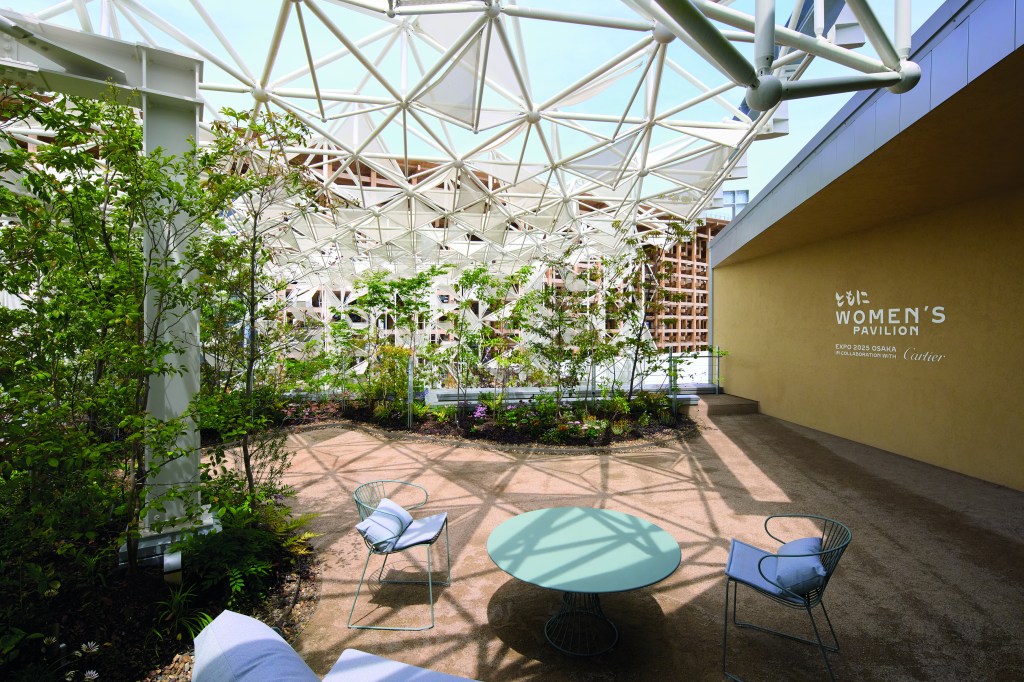
The Japanese ideograph ‘Wa’ is loosely translated as ‘harmony,’ and has origins as far back as the 8th-century Nara period. The kanji phrase is used ubiquitously in Japan today and has come to embody not just Japanese culture, but more broadly, the comfortable and amiable coexistence of people.
It is a term that the Expo 2025 Osaka Women’s Pavilion, which Cartier collaborated on, has integrated seamlessly into its architecture and into what the temporary building represents. The ‘Wa space’ agora on the second floor of the Women’s Pavilion is dedicated to harmoniously bringing together change-makers, leaders and global experts. It is an amalgamation of the Osaka Expo’s theme: intentionally designing future societies and championing gender equality through collective dialogue and the recognition of the contributions of women.
In May, human rights barrister Amal Clooney joined Safeena Husain, the founder of India-based non-profit Educate Girls, and Benjamin Omondi Mboya, the executive director of Ujamaa Africa, in a dialogue moderated by Pascale de la Fregonniere, a strategic advisor to Cartier Philanthropy. Titled ‘Transformative Philanthropy: The Power to Change Lives,’ the panel centred on how philanthropy can play a role in addressing gender inequity.
“There is progress,” de la Fregonniere stated. “But there are still a lot of systemic barriers that women will have to face throughout their lives.”
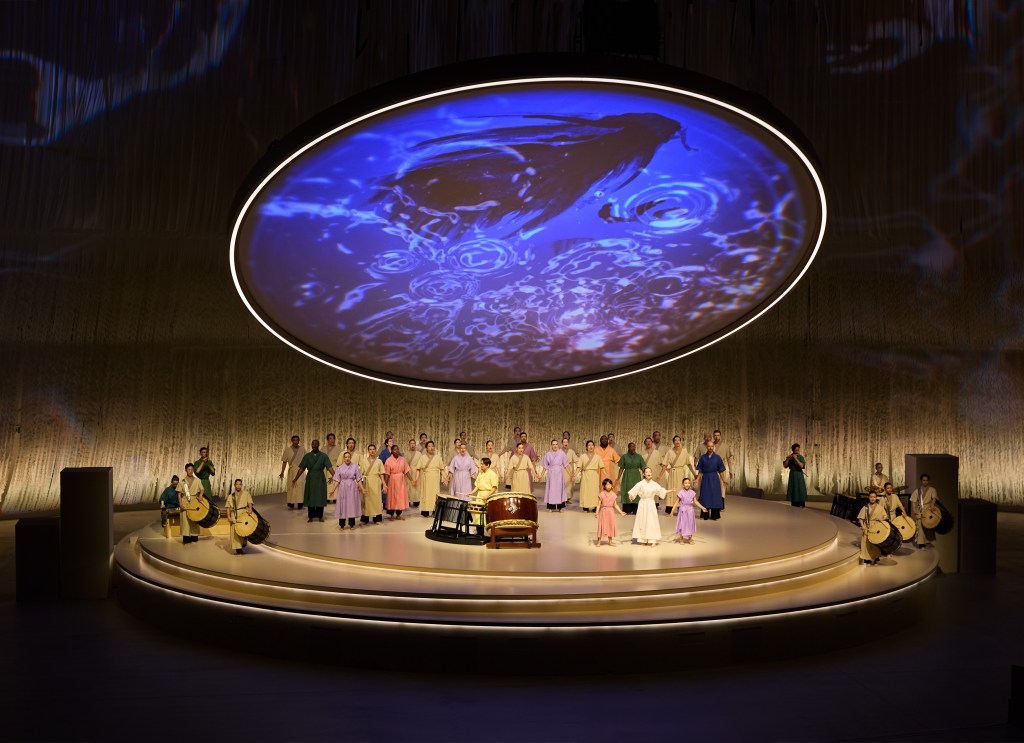
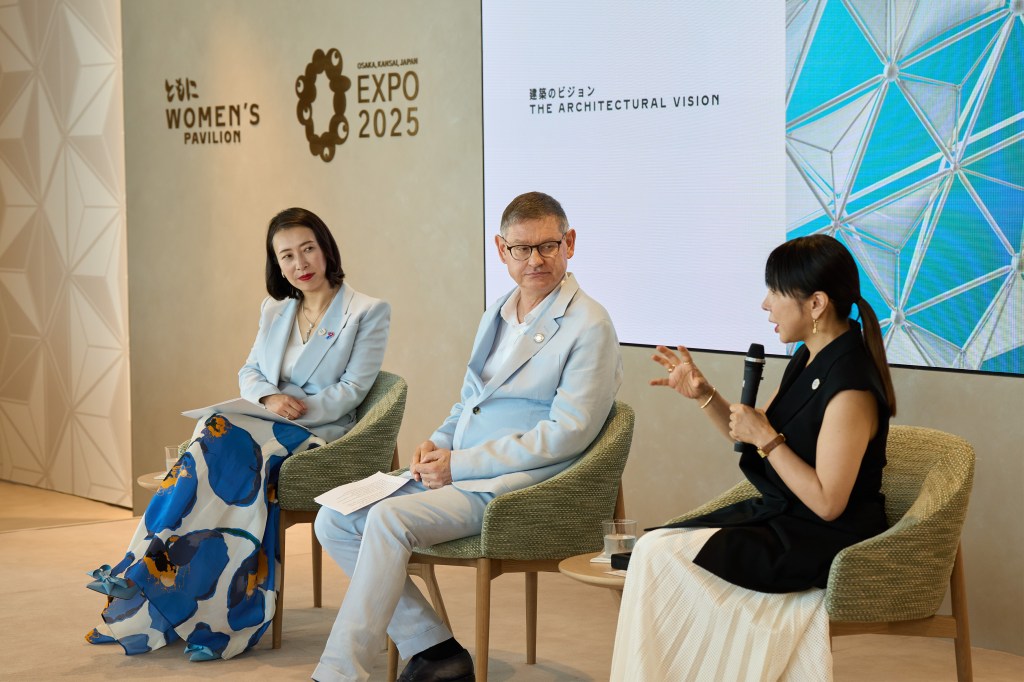
Cyrille Vigneron, the Chairman of Philanthropy and Culture at Cartier, says his division of the French watch and jewellery company is focused on the economic and social empowerment of women. In addition to supporting projects like the Osaka Expo Women’s Pavilion, it partners with organisations around the globe to increase women’s access to education, health services, dignity, and protection.
Cartier Philanthropy assists non-profit organisations by partnering to de-risk projects and bringing attention to injustices. “Having a name gives us a responsibility to use it for good,” says Vigneron. “The ripple effect can be big.”
Dialogues in the Wa space
Philanthropy is just one of the topics that will be discussed by change-makers in the Women’s Pavilion. Between now and October, talks will take place relating to gender roles and identities, mother nature, business and technology, education and policy, and arts and culture. The topics align closely with the UN’s Sustainable Development Goals, all of which intersect with the goal of gender equality.
“We are here today built on collective strength,” Cartier Japan President and CEO June Miyachi stated at the opening ceremony of the Women’s Pavilion. “At the current pace, it is said that it would take more than 130 years to achieve gender parity in our world.”
Gender parity may not be feasible in 2025. Still, Cartier, in conjunction with the Japanese government and Japan’s World Exposition Association, has created an accessible space where challenges and solutions can come to light.
“Women represent half of humanity, and each and every exhibition universally should celebrate them,” Vigneron told the opening ceremony audience of 1600 people.
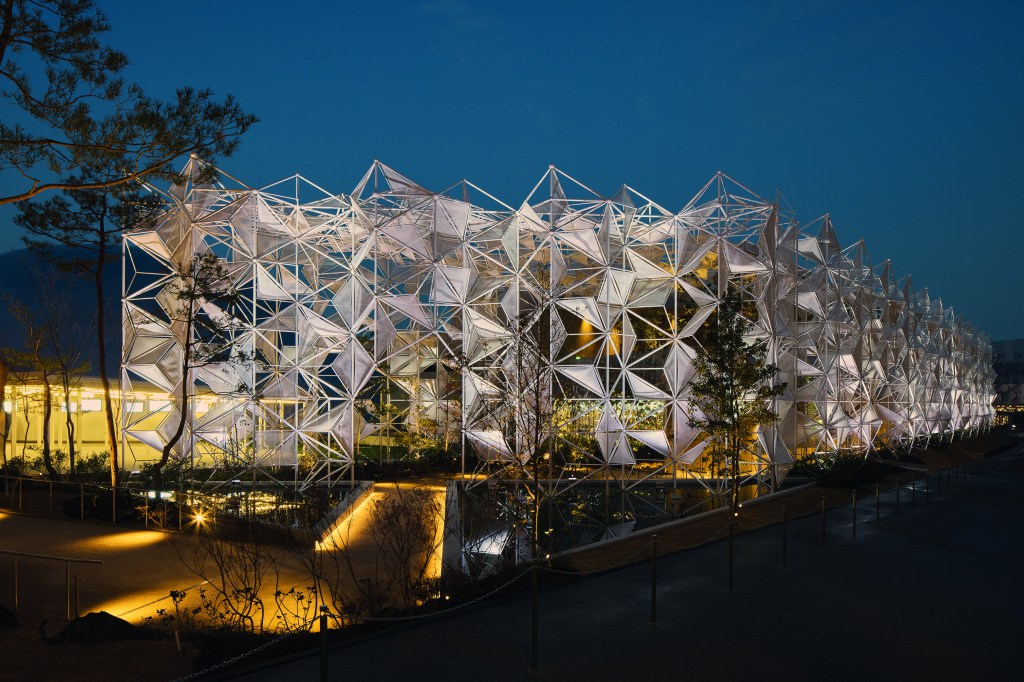

“It is very unusual to have a pavilion that is not representing a nation, but is representing an idea,” says Es Devlin, the artistic director for the Women’s Pavilion and British-born stage designer who specialises in immersive experiences. Devlin says she drew on the Japanese concept of Tomoni, or togetherness, when curating what a guest experiences on the ground floor of the pavilion.
“To me, the Tomoni aspect of it is, how about we don’t divide ourselves into nations, but celebrate ourselves as one culture, one species.”
The lead architect of the pavilion, Nagayama Yuko, says she is also motivated by improving the lives of all marginalised people.
“Making life more liveable for women is not the only goal,” says Yuko. “By turning our gaze toward people regarded as minorities, we grow closer to building a more liveable society for all people.”
Tokyo-native Yuko spearheaded up-cycling the Kumiko-inspired façade of the Women’s Pavilion from elements used in the Japanese Pavilion during the Dubai Expo. Continuing the circular economy, the steel frame façade from this year’s Women’s Pavilion will be reused in 2027 at the Green Expo in Yokohama.
Multidimensional immersion
Yuko and Devlin have collaborated to create an immersive Wa experience for guests visiting the Women’s Pavilion.
While wearing headphones, each attendee hears the stories of three women: Japanese author Banana Yoshimoto, Sudanese poet Emi Mahmoud, and Mexican climate activist Xiye Bastida. Visitors are guided through rooms of neutral-coloured wood highlighting global statistics on the plight of women, into soothing meditative spaces designed for reflection, and through a mirrored room where inspiring words and phrases are projected onto their skin.
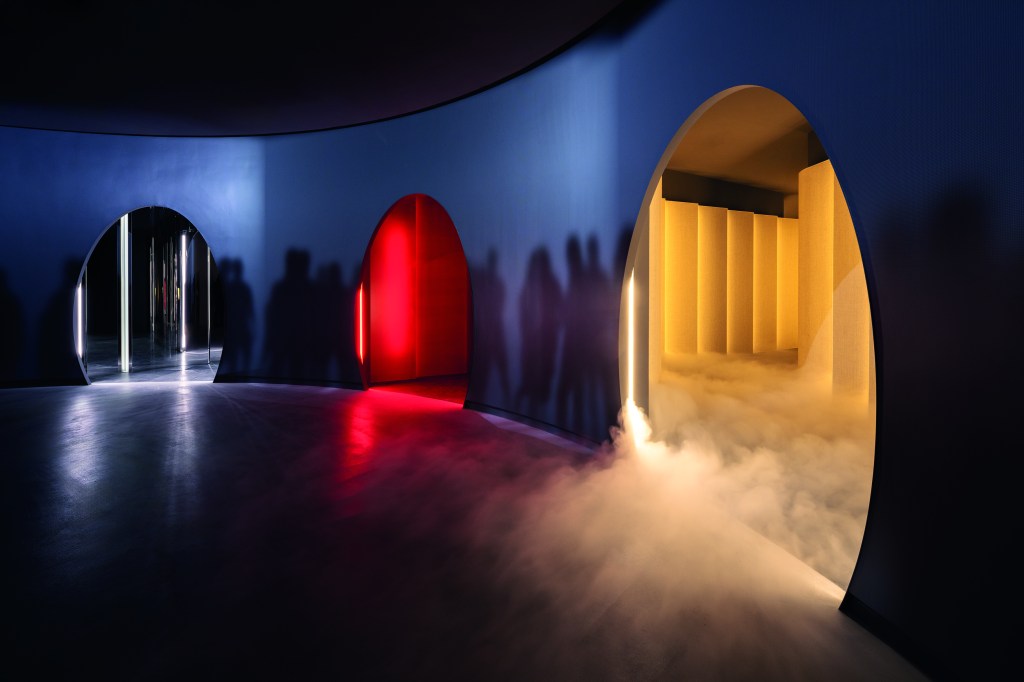

Devlin’s multidisciplinary sensory experience was also present during the Opening Ceremony of the Women’s Pavilion, where the words of Japan’s Imperial Highness Princess Takamado were projected onto the walls of the auditorium. Wadaiko drummers joined with the voices of Japanese and international choirs in a powerful performance calling for resilience, unity, and transformation.
Former New Zealand Prime Minister Jacinda Ardern spoke of her great-great-grandmother signing a suffragette petition in 1893, which culminated in New Zealand becoming the first country in the world to give women the vote.

“Women still only hold roughly a quarter of parliamentary seats globally. One in every ten women lives in extreme poverty. Violence against women and girls, according to the UN, remains a pandemic,” Prime Minister Ardern stated emphatically. A solution, Ardern says, is to have greater representation at the highest levels. “Having women in leadership and as decision makers is a critical step in overcoming the inequities women face.”
It is a call to action that was echoed by another high-profile human rights activist earlier in the day, who noted that gender parity in the workforce is a century away. “The arc of history bends towards justice, but that’s only because individuals are bending it,” Clooney told the packed room of the Wa space inside the Women’s Pavilion on a hot May Kansai afternoon.
“So, we can’t just sit back.”
The Women’s Pavilion will be open until October 13, when the Osaka Expo concludes. For more information, tap here.
Look back on the week that was with hand-picked articles from Australia and around the world. Sign up to the Forbes Australia newsletter here or become a member here.
